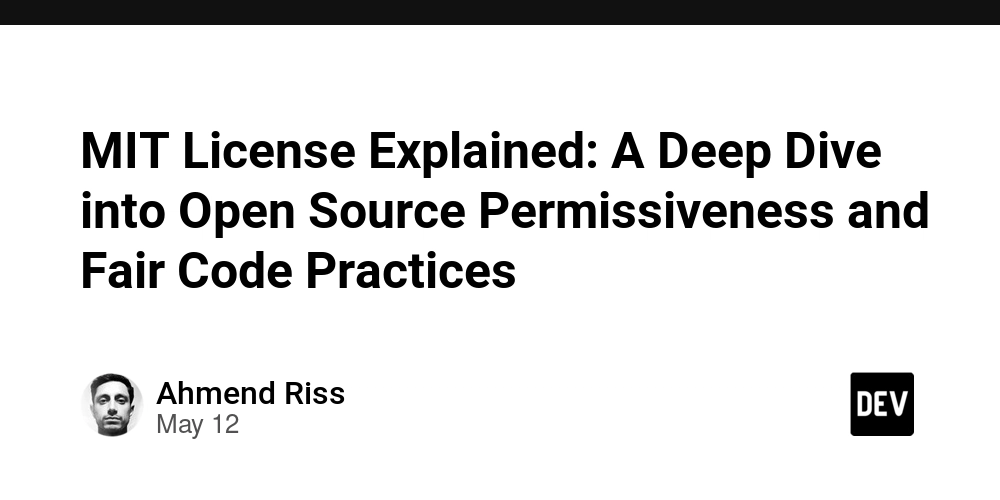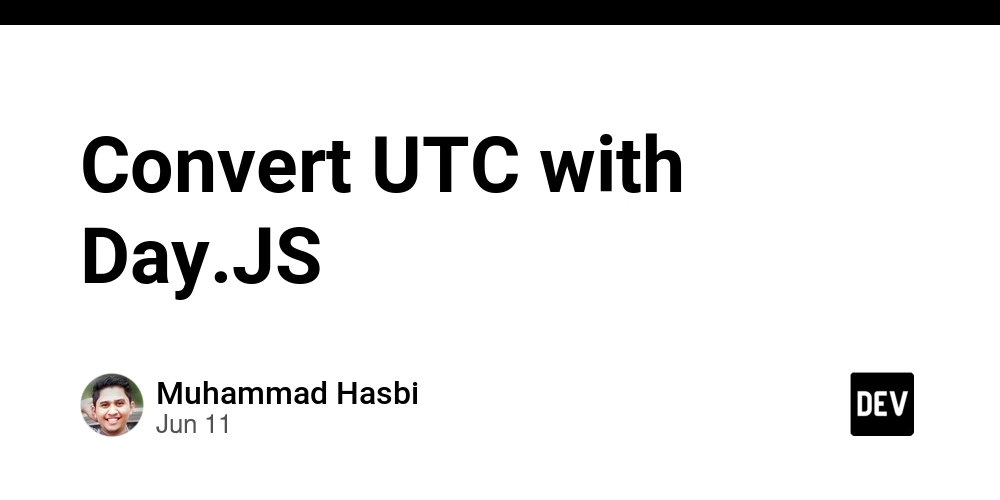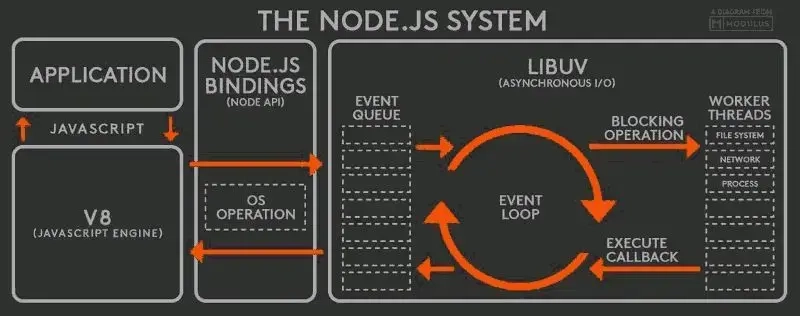MIT License Explained: A Deep Dive into Open Source Permissiveness and Fair Code Practices
Abstract: This post offers a comprehensive look at the famous MIT License, its history, core principles, applications, and challenges. We explore the origins of the license from MIT, its modern use in open source projects, and emerging concepts in fair code and developer compensation. Alongside clear definitions and practical use cases, we discuss how alternative licensing models—such as token-based approaches—compare to the MIT License’s minimalistic style. We also provide useful tables, bullet lists, and hyperlinks to authoritative sources to help readers navigate the evolving landscape of software licensing. Introduction The MIT License is one of the most popular and permissive open source licenses. This article explores its history, core concepts, and applications in today's software development and blockchain integration. As an iconic example of minimal legal restrictions, the MIT License has empowered developers to collaborate on projects ranging from simple libraries to enterprise-grade systems. In this post, we break down the license’s foundations and its influence on open source philosophies, as well as comparing it to emerging alternate models that aim for fair compensation for developers. Background and Context The Origins of the MIT License Developed at the Massachusetts Institute of Technology, the MIT License was created to promote free code sharing and collaboration. Its design rooted in academic simplicity allowed countless projects—from Node.js modules to Python libraries—to adopt its permissive terms. This simple text, often referred to as the Expat License, enables anyone to reuse, modify, and distribute software as long as the original copyright notice is maintained. You can read the official MIT License text on opensource.org/licenses/MIT. The Ecosystem of Open Source Licensing The MIT License is one of many licenses in the open source landscape. In contrast to copyleft models like the GNU GPL, which require derivative works to remain open source, the MIT License does not impose the same restrictions. This minimal constraint fosters innovation and enables commercial use, sometimes at the cost of potential exploitation where proprietary products integrate open source components without contributing back. Other licenses—such as the Apache 2.0 or the BSD 3-Clause—share similarities with the MIT License but add extra clauses (e.g., patent protection). Moreover, new licensing models like OCTL (based on blockchain and token-based compensation, see OCTL Whitepaper) aim to address where traditional licenses like MIT fall short in terms of sustainability for developers. Key Definitions and Concepts To ensure clarity, here are some key terms in our discussion: MIT License: A short, permissive license that allows for wide reuse of code with minimal restrictions. Fair Code Licensing: Modern licensing models that emphasize equitable compensation and transparency for contributors. Copyleft: A style of licensing where derivative works must be distributed under the same license terms, ensuring open access. Permissive License: Licenses that impose minimal restrictions, allowing the integration into closed source or commercial products. Dual Licensing: A strategy where software is released under both an open source license and a commercial license. Core Concepts and Features Simplicity and Permissiveness The MIT License is renowned for its concise and straightforward nature. Here are the main features that make it stand out: Minimal Legal Text: The license is short and easy to understand, making it accessible even to beginner developers. Wide Usability: It permits free use, modification, distribution, and even commercial integration, provided the original license is retained. Legal Familiarity: With decades of successful adoption, legal professionals and organizations alike are comfortable working within its framework, as noted by analyses like those on the GitHub License Usage Landscape. Developer Freedom and Risks The MIT License provides developers with significant freedom but some inherent risks: Freedom with Minimal Overhead: Developers can rapidly build, fork, and distribute software without heavy legal constraints. Commercial Exploitation Concerns: Critics argue that its permissiveness allows corporations to use open source code with little contribution back, potentially leading to abuse of the original project’s intent for community collaboration. Lack of Warranty or Liability: The license disclaims warranty, meaning users assume all risk, and developers are shielded from legal claims. Dual Licensing Possibilities Dual licensing under the MIT License gives software creators flexibility: Dual Licensing Strategy: Developers can release the code under MIT for the open source community and also offer a separate commercial license. This is similar to model

Abstract:
This post offers a comprehensive look at the famous MIT License, its history, core principles, applications, and challenges. We explore the origins of the license from MIT, its modern use in open source projects, and emerging concepts in fair code and developer compensation. Alongside clear definitions and practical use cases, we discuss how alternative licensing models—such as token-based approaches—compare to the MIT License’s minimalistic style. We also provide useful tables, bullet lists, and hyperlinks to authoritative sources to help readers navigate the evolving landscape of software licensing.
Introduction
The MIT License is one of the most popular and permissive open source licenses. This article explores its history, core concepts, and applications in today's software development and blockchain integration. As an iconic example of minimal legal restrictions, the MIT License has empowered developers to collaborate on projects ranging from simple libraries to enterprise-grade systems. In this post, we break down the license’s foundations and its influence on open source philosophies, as well as comparing it to emerging alternate models that aim for fair compensation for developers.
Background and Context
The Origins of the MIT License
Developed at the Massachusetts Institute of Technology, the MIT License was created to promote free code sharing and collaboration. Its design rooted in academic simplicity allowed countless projects—from Node.js modules to Python libraries—to adopt its permissive terms. This simple text, often referred to as the Expat License, enables anyone to reuse, modify, and distribute software as long as the original copyright notice is maintained. You can read the official MIT License text on opensource.org/licenses/MIT.
The Ecosystem of Open Source Licensing
The MIT License is one of many licenses in the open source landscape. In contrast to copyleft models like the GNU GPL, which require derivative works to remain open source, the MIT License does not impose the same restrictions. This minimal constraint fosters innovation and enables commercial use, sometimes at the cost of potential exploitation where proprietary products integrate open source components without contributing back.
Other licenses—such as the Apache 2.0 or the BSD 3-Clause—share similarities with the MIT License but add extra clauses (e.g., patent protection). Moreover, new licensing models like OCTL (based on blockchain and token-based compensation, see OCTL Whitepaper) aim to address where traditional licenses like MIT fall short in terms of sustainability for developers.
Key Definitions and Concepts
To ensure clarity, here are some key terms in our discussion:
- MIT License: A short, permissive license that allows for wide reuse of code with minimal restrictions.
- Fair Code Licensing: Modern licensing models that emphasize equitable compensation and transparency for contributors.
- Copyleft: A style of licensing where derivative works must be distributed under the same license terms, ensuring open access.
- Permissive License: Licenses that impose minimal restrictions, allowing the integration into closed source or commercial products.
- Dual Licensing: A strategy where software is released under both an open source license and a commercial license.
Core Concepts and Features
Simplicity and Permissiveness
The MIT License is renowned for its concise and straightforward nature. Here are the main features that make it stand out:
- Minimal Legal Text: The license is short and easy to understand, making it accessible even to beginner developers.
- Wide Usability: It permits free use, modification, distribution, and even commercial integration, provided the original license is retained.
- Legal Familiarity: With decades of successful adoption, legal professionals and organizations alike are comfortable working within its framework, as noted by analyses like those on the GitHub License Usage Landscape.
Developer Freedom and Risks
The MIT License provides developers with significant freedom but some inherent risks:
- Freedom with Minimal Overhead: Developers can rapidly build, fork, and distribute software without heavy legal constraints.
- Commercial Exploitation Concerns: Critics argue that its permissiveness allows corporations to use open source code with little contribution back, potentially leading to abuse of the original project’s intent for community collaboration.
- Lack of Warranty or Liability: The license disclaims warranty, meaning users assume all risk, and developers are shielded from legal claims.
Dual Licensing Possibilities
Dual licensing under the MIT License gives software creators flexibility:
Dual Licensing Strategy: Developers can release the code under MIT for the open source community and also offer a separate commercial license. This is similar to models used in other projects like MySQL.
Legal and Practical Considerations: Dual licensing requires that the original maintainers have the right to relicense the code, often managed via Contributor License Agreements (CLAs).
Table: Comparison of Licensing Models
Below is a comparison table showcasing how the MIT License stacks up against other popular licenses:
| License | Type | Key Feature | Developer Compensation | Copyleft/Permissive |
|---|---|---|---|---|
| MIT License | Permissive | Minimal legal text; easy adoption | None (donations possible) | Permissive |
| GNU GPL v3 | Copyleft | Ensures derivatives remain open | Donation-based/funding | Strong Copyleft |
| Apache 2.0 | Permissive | Patent protection clause included | None | Permissive |
| BSD 3-Clause | Permissive | Similar to MIT with minor clauses | None | Permissive |
| OCTL (Token-Based Licensing) | Fair Code | Built-in token compensation system | Token-based | Flexible (mixed) |
Table: A summarized view of various licensing models with an emphasis on MIT License features.
Applications and Use Cases
Open Source Software Development
The MIT License is widely used across many projects due to its flexibility. Examples include:
- Web Development Frameworks: Libraries such as Node.js modules like Express.js are MIT-licensed, allowing startups and large companies to innovate without legal roadblocks.
- Game Development and Blockchain Projects: With the rise of blockchain-based projects, a simple permissive license lets developers integrate open source components into decentralized applications seamlessly.
- Academic and Research Software: Universities and research institutions, exemplified by MIT’s official site, favor the MIT License for its ease of reuse and modification in academic projects.
Dual Licensing and Commercial Models
Many successful projects leverage dual licensing:
- Ruby on Rails: This framework initially gained traction partly due to its MIT-style permissiveness, making it simple for developers and companies to experiment and build upon.
- Hybrid Models: Some projects integrate open source licensing with commercial offerings. This strategy allows companies to offer premium services while maintaining a free core with an MIT-like license.
Emerging Trends: Blockchain and Governance
Modern trends show an integration of open source licensing with blockchain:
- Token-Based Compensation: New models like OCTL seek to address developer compensation through blockchain integration.
- On-Chain Licensing Transparency: Some projects are now using decentralized ledgers to track contribution and licensing compliance, ensuring transparency and fairness.
Additionally, discussions on platforms like Hacker News and Stack Overflow reveal that developers are increasingly looking for ways to balance open source freedom with sustainable financial models.
Challenges and Limitations
Despite its popularity, the MIT License is not without challenges:
Exploitation Concerns: The permissive nature may allow large corporations to profit at the expense of the original developers. Critics argue that without mechanisms for fair compensation or mandatory return of benefits, creators remain undervalued.
Ambiguities in Dual Licensing: Although dual licensing provides options, managing copyrights and ensuring that code contributions comply with multiple licenses can be complex. Contributor License Agreements (CLAs) are essential but sometimes challenging to implement effectively.
Integration with Other Licenses: Mixing MIT-licensed code with code under other licensing regimes (like copyleft licenses) may lead to compatibility issues. Developers must exercise caution when merging projects with different legal requirements.
No Warranty or Liability Protection for Users: While protecting creators, the lack of a warranty in the MIT License leaves end users vulnerable, especially in mission-critical applications where reliability is paramount.
Bullet List of MIT License Limitations:
- Potential for corporate exploitation without reciprocation.
- No direct developer compensation or royalty mechanism.
- Ambiguity over integrating with multiple licensing frameworks.
- No warranty, leaving users exposed to potential risks.
Future Outlook and Innovations
Evolving Licensing Models
The future of software licensing may see a shift from pure permissiveness to models that integrate fair compensation, especially in the realm of blockchain and decentralized technology. Innovations include:
Token-Based Licenses: Licensing models such as OCTL use blockchain to track usage and enforce token-based compensation for developers. This approach seeks to fairly distribute revenue among contributors.
Hybrid Licensing Strategies: Companies might increasingly adopt dual licensing strategies to benefit both the open source community and commercial markets. Such models allow a free core under the MIT License alongside a commercial version that offers additional features or services.
Enhanced Transparency and Governance: With decentralized systems, transparency around code usage, contribution, and revenue generation can be improved using on-chain governance models. This ensures that all parties—from individual developers to large enterprises—can track compliance and benefit sharing.
Regulatory and Community Impacts
As open source licensing intersects with emerging technologies:
Legal and Regulatory Evolution: With growing reliance on software components across critical industries, governments and regulatory bodies may call for more robust licensing practices. The US and EU are paying closer attention to software compliance, which could influence future licensing reforms.
Community-Driven Funding: The open source community is exploring innovative funding mechanisms, such as those discussed on GitHub Sponsors or by leveraging cryptocurrency and token-based models. These changes could sustain more projects in the long term while ensuring fairness for all contributors.
Integration with Blockchain and Decentralized Finance
There is significant buzz around the integration of licensing with blockchain technologies. A few trends to note include:
- On-Chain Record Keeping: Decentralized ledgers can be used to record license compliance, contribution history, and revenue shares.
- Interoperability Among Projects: As developers adopt multi-chain solutions, ensuring license compatibility across disparate blockchain platforms will be crucial.
- Longtail Keywords in Focus: Terms like “blockchain open source licensing,” “fair code compensation,” and “decentralized licensing models” are increasingly relevant as the intersection between these fields continues to evolve.
From extensive discussions on platforms such as Dev.to to community forums, it is clear that the future of software licensing is leaning towards a blend of traditional principles with innovative, technology-driven enhancements.
Summary
In summary, the MIT License stands as a timeless pillar of open source permissiveness. Its simplicity and minimal legal overhead have sparked decades of collaboration and innovation, making it the go-to license for myriad projects. However, while its ease-of-use is a significant advantage, it does come with limitations, including risks of corporate exploitation and challenges in ensuring fair compensation for developers.
We have explored the origins of the MIT License, its core features, applications in both academic and commercial environments, and examined modern trends like dual licensing and token-based compensation systems such as OCTL. The licensing landscape is evolving, with new models addressing the unmet needs of developers who want both freedom and financial sustainability.
Looking ahead, future innovations may integrate blockchain for enhanced transparency, incorporate fair code practices, and promote hybrid licensing models that balance open collaboration with robust compensation frameworks.
Key Takeaways:
- MIT License Strengths: Its short text, ease-of-integration, and widespread acceptance foster rapid development and innovation.
- Limitations: The license’s permissiveness can lead to challenges in developer compensation and potential exploitation.
- Future Directions: Emerging models focus on incorporating blockchain, fair compensation practices, and dual licensing strategies to support developers better.
For additional insights on licensing trends and open source funding, be sure to check resources like best-open-source-license and opensource.org/licenses. Furthermore, interesting perspectives are shared by developers on Dev.to and other platforms, where community discussions continue to shape the future of open source funding.
References and Further Reading
For those looking to dive deeper into the world of open source licenses, here are some valuable resources:
- Official MIT License Text: opensource.org/licenses/MIT
- Historical Context from MIT: MIT Official Site
- GitHub Licensing Landscape: GitHub License Usage
- Blockchain and Open Source Funding: OCTL Whitepaper
- Discussion on Fair Code: fair-code
Additionally, explore recent developer insights on the evolving licensing ecosystem from blogs on Dev.to like:
- Arbitrum and Regulatory Challenges: Navigating the Evolving Landscape of Decentralized Finance
- License Token – A New Dawn in Open Source Funding
- Navigating Financial Sustainability in Open Source Projects
Final Thoughts
The MIT License has long been celebrated for its role in democratizing software creation. Its enduring success lies in its minimalistic approach that encourages adoption. However, as the digital ecosystem evolves, there is a growing need to address the sustainability and fairness challenges inherent in open source projects. By combining traditional permissive licenses with new blockchain-based and dual licensing models, the open source community can aim for a future where innovation and fairness go hand in hand.
Whether you are an indie developer, part of a large enterprise, or a blockchain enthusiast interested in fair code, understanding the nuances of the MIT License and its alternatives is key to navigating modern software development. With informed choices and emerging innovations, the future of open source funding and licensing looks both robust and exciting.
Happy coding and may your projects thrive under open, fair, and innovative licensing models!












































































































































































![[The AI Show Episode 156]: AI Answers - Data Privacy, AI Roadmaps, Regulated Industries, Selling AI to the C-Suite & Change Management](https://www.marketingaiinstitute.com/hubfs/ep%20156%20cover.png)
![[The AI Show Episode 155]: The New Jobs AI Will Create, Amazon CEO: AI Will Cut Jobs, Your Brain on ChatGPT, Possible OpenAI-Microsoft Breakup & Veo 3 IP Issues](https://www.marketingaiinstitute.com/hubfs/ep%20155%20cover.png)



































































































































































































































































_incamerastock_Alamy.jpg?width=1280&auto=webp&quality=80&disable=upscale#)
_Brain_light_Alamy.jpg?width=1280&auto=webp&quality=80&disable=upscale#)





























































































![Senators reintroduce App Store bill to rein in ‘gatekeeper power in the app economy’ [U]](https://i0.wp.com/9to5mac.com/wp-content/uploads/sites/6/2025/06/app-store-senate.jpg?resize=1200%2C628&quality=82&strip=all&ssl=1)



























































































![[Boost]](https://media2.dev.to/dynamic/image/width=800%2Cheight=%2Cfit=scale-down%2Cgravity=auto%2Cformat=auto/https%3A%2F%2Fdev-to-uploads.s3.amazonaws.com%2Fuploads%2Fuser%2Fprofile_image%2F3132277%2F81626fba-8d4f-4b07-bae4-cc27f3ff31ac.jpg)